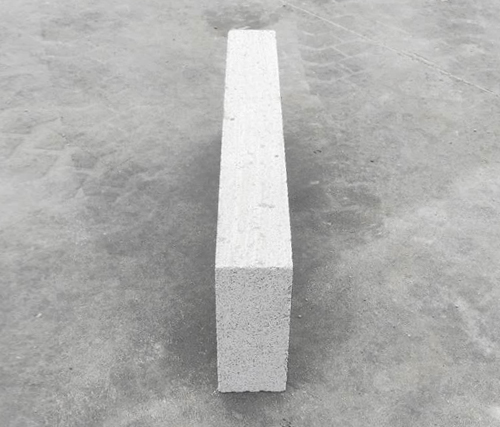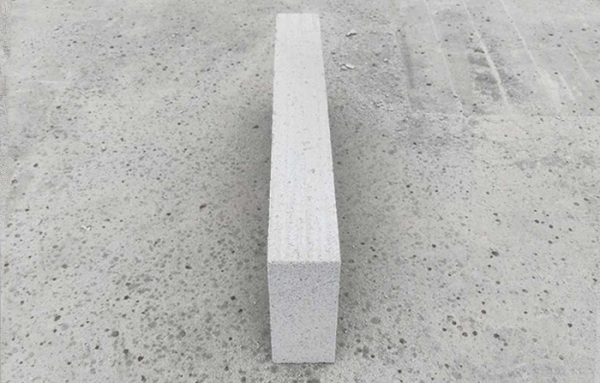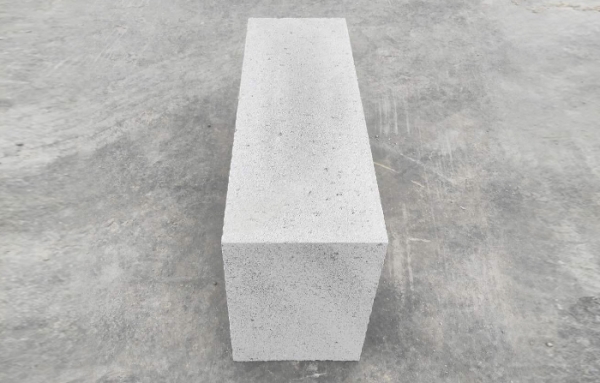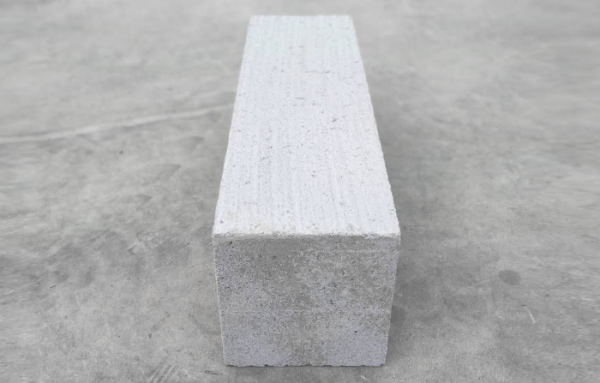In the current wall building process, new wall materials are mainly used Autoclaved aerated concrete blocks This technology has been widely used.
This kind of material is mainly used in frame type structural buildings and has replaced the clay solid brick masonry material. This material uses cement, lime, gypsum and river sand as raw materials, and uses aluminum powder to foam, form, autoclave and other processes to make microporous block wall materials.
This kind of new technology has more strict quality requirements than the previous concrete block technology, and its quality control methods and key points need to be further discussed.
I Selection of construction materials
The crack is Aerated concrete block The common quality problem of the wall is closely related to the shrinkage of the aerated concrete block material itself.
Therefore, it is necessary to select blocks with small drying shrinkage value. Generally speaking, the higher the density of raw materials used, the smaller the drying shrinkage value will be. In addition to this condition, the thermal conductivity of blocks should also be considered.
When selecting materials, consider the difference between raw materials and production technology. The drying shrinkage values of products from different manufacturers are different. In order to ensure production quality, when selecting materials, it is better to select products with mature technology, stable quality and good maintenance.
II. Control method of construction technology
1. Draw block related arrangement diagram
The arrangement plan of aerated concrete blocks is not designed before construction, which results in the shorter overlapping length of upper and lower blocks in some parts, while the strength grade of masonry mortar used for infilled walls is low. If reinforcement mesh is not added as required during construction, the wall will shrink and produce axial tension, and vertical cracks will appear along the tooth seam.
Therefore, before building the wall, it is necessary to make the arrangement diagram according to the characteristics and requirements of the engineering drawing and the module and size of the block. At the same time, 40 to 60 days after the block leaves the factory, it can be mounted on the wall until its volume no longer changes. It is also necessary to consider the up and down staggered joints of the block. For this, it is necessary to make the lap length greater than 1/3 of the block length, greater than 150 mm. If the overlapping length of 3 pieces at the same position cannot meet the above requirements, it is necessary to place 26 bars in the horizontal gap, and the length of both ends of the bar is required to exceed the vertical seam by 350 mm.
2. Set relevant concrete guide wall
For the problem of setting concrete guide wall at the bottom of the wall:
(1) The walls of the ground floor buildings (except the basement) need to be set with concrete walls, because the ground floor buildings have higher requirements on the strength of the wall foot, the impermeability of the wall, and the durability of the house;
(2) For multi-storey buildings (non high-rise buildings) with more than two floors, it is also better to set concrete guide walls to help unify the elevation and effectively waterproof during construction;
(3) For high-rise buildings, the concrete guide wall will increase the weight of the wall, which is not conducive to the stability of the building structure, so the guide wall cannot be set.
3. Influence of water content on the upper wall of block
The water content of the block has a significant impact on the upper wall: take aerated concrete block as an example, its porosity is large, and it can absorb a lot of water.
If the block is not allowed to fully absorb water and wet before plastering during construction, it will absorb a large amount of water from the plastering mortar, which will make the mortar hydration impossible and result in insufficient strength of the plastering mortar.
Therefore, before building the wall, it is necessary to make the block absorb water to fully wet its surface. In addition, if the water content of the block is too large, it will lead to the volume shrinkage of the block after water loss, and cracks and gaps will appear on the wall.
Therefore, the water content of the block shall not exceed 15%. Especially, when working in rainy days, the block shall be covered. When the rainfall is more than light rain, masonry shall be stopped and the built exterior wall shall be covered to prevent rainwater immersion. The blocks shall enter the construction site 7 days in advance and be placed indoors, so that the moisture content of the blocks and the outdoor atmosphere can reach an approximate balance. For the exterior wall wetted by rain, the wall plastering can be carried out after its moisture content is approximately balanced with the outdoor atmosphere.
4. Requirements for mortar plumpness
During construction, there are also certain requirements for mortar plumpness. The fullness of mortar joints of masonry shall be controlled above 80%, and the thickness of mortar joints is usually 812mm. If the adhesive is used for dry operation, the thickness of the mortar joint shall be 35mm. When laying each brick, all mortar joints shall be hooked and compacted with original mortar, and the concave joint shall be 13mm.
During the operation of overall masonry, it is necessary to fill the mortar of the vertical joints with "squeezing method", "grouting method" and other methods. It is necessary to carry out masonry, joint filling and pointing at the same time. The more important thing is to deal with the joints between the frame and the blocks.
After the block of the upper layer is processed, the secondary pointing of the interlayer pointing is required. After the wall structure is stable, red bricks shall be used for oblique masonry, and the frame beams and blocks shall be compacted and tightened. The gaps between them can also be filled with fine aggregate concrete (containing expansion agent).
Full attention should also be paid to safety issues in block construction:
1. Before work, all kinds of lifting machinery, ropes, clamps, temporary scaffolds and other construction safety equipment should be checked, especially the block clamps should be flexible and reliable.
2. Before the block is clamped, the block shall be placed in a stable position, and the clamp plate of the clamp shall be clamped on the center line of the block. If cracks are found, the lifting shall be stopped.
3. The unloading and stacking place of blocks shall be stable and free from sundries. When the block is in place, the clamp can be released only after the block is placed stably. When lifting blocks, no person shall stand below the hook or perform other operations.
4. During masonry construction, it is not allowed to stand on the wall body for masonry, marking and other operations. When internal scaffold is used, safety net shall be set around the outer wall of the house, and it shall be lifted layer by layer with the construction height; A layer of safety net under the eaves shall not be removed before the roof works are completed.
5. Vertical joint grouting must be carried out immediately for the blocks in place, and temporary stability support shall be added for the wall between windows, independent columns and the parts protruding out of the wall with poor stability.
6. On the masonry of the block, it is not suitable to pull the cable wind rope, hang heavy objects, or use it as a temporary implementation of other construction. If the support point of the support is really needed to be set on the masonry, effective structural measures should be taken.
7. The mortar pump shall be checked before use. The operation shall be carried out according to the specified pressure, and labor protection articles shall be worn.









